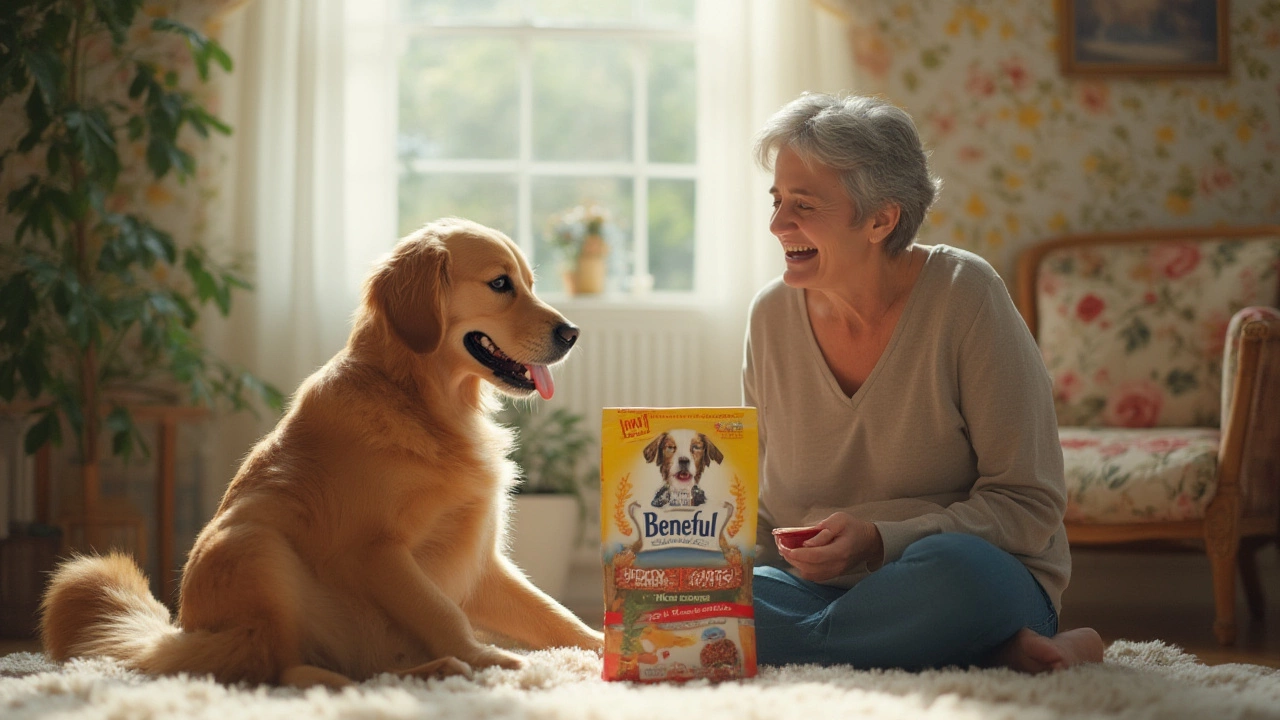Beneful Ingredients: What’s Really in Your Dog’s Food?
If you’re feeding your pup Purina Beneful, you probably wonder what’s inside the bag. Knowing the ingredients helps you decide if it’s a good fit for your dog’s health. Below we break down the main components, explain what they do, and point out the red flags you should keep an eye on.
Common Ingredients and Their Roles
Most Beneful formulas list a handful of familiar items. The first ingredient is usually a meat source – chicken, beef, or turkey meal. This provides protein for muscle growth and repair. Next you’ll see grains like corn, wheat, or rice. They give energy, but they’re also the biggest source of carbs, so a dog that’s overweight might need a lower‑carb option.
Vegetables and fruits show up as pea protein, carrots, or apples. They add vitamins, minerals, and fiber. Fiber helps digestion, but the amounts in dog food are usually modest. You’ll also see added fats – often chicken fat or fish oil – which keep the kibble tasty and support skin and coat health.
To keep the food fresh, manufacturers add preservatives like mixed tocopherols (a form of vitamin E) and citric acid. These are generally safe, but if your dog has a sensitivity, watch for any upset stomach after meals.
Red Flags: Ingredients to Watch Out For
While Beneful meets basic nutrition standards, a few ingredients raise concerns for many owners. The first is “by‑product meal.” This term can include low‑quality animal parts that aren’t as nutritious as whole meat. If you see horse or poultry by‑product meal high on the list, consider swapping to a formula that lists a real meat source first.
Artificial flavors and colors are another point of debate. They make the kibble look bright and taste appealing, but they don’t add nutritional value. Some dogs develop allergies to these additives, showing itchy skin or ear infections.
High levels of corn gluten meal and wheat gluten can be problematic for dogs with grain sensitivities. These proteins are used to boost protein content cheaply, but they’re not as digestible as fresh meat. If your dog shows gas, loose stools, or itchy skin, try a grain‑free or limited‑ingredient diet.
Lastly, the sugar content. Some Beneful recipes include sugar or corn syrup solids to improve palatability. Excess sugar can lead to weight gain and dental issues over time. Check the ingredient list for “sugar,” “syrup,” or “dextrose” if you’re watching your dog’s calorie intake.
Overall, Beneful can be a convenient, affordable option for many dogs, especially if you pair it with occasional fresh foods like boiled chicken or veggies. The key is to read the label, compare it with your dog’s specific needs, and adjust portions if you notice any health changes.
Remember, every dog is different. If you’re unsure about an ingredient, talk to your vet. They can help you decide whether Beneful fits your pet’s diet or if a higher‑quality protein source would be better. Knowing what’s in the bag puts you in control of your dog’s health – and that’s worth the extra few minutes of label‑reading.
Posted By Bryndle Redding On 19 Jul 2025 Comments (0)
Is Beneful Good for Dogs? Complete Guide to Ingredients, Safety, and Nutrition
Curious if Beneful is safe for your dog? Dive into the facts about Beneful's ingredients, nutrition, and what vets think. Make informed choices for your pup.
READ MORE